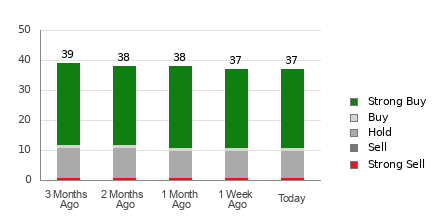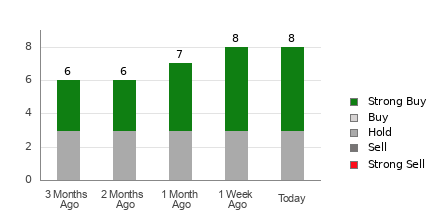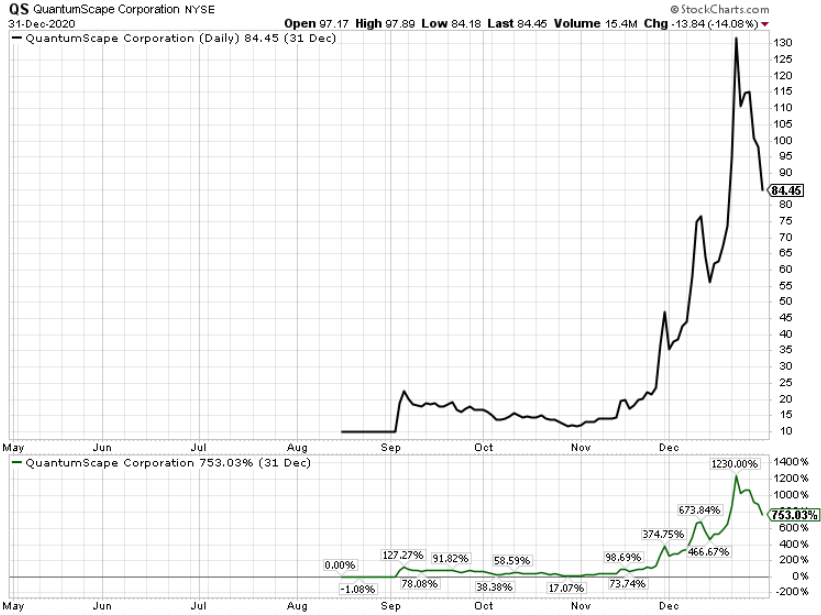The much talked-about “Magnificent 7” list includes the market’s top tech titans that drive the stock market. However, most investors are also familiar with the acronym FAANG, which refers to the top-performing companies over the last decade. Here’s how the FAANG stocks have performed so far in 2024, compared to the S&P 500 Index’s ($SPX) gain of 9.5%:
In this article, we’ll focus on mega-cap streaming giant Netflix, which has an impressive number of subscribers worldwide. Despite stiff competition in the streaming space, Netflix’s revenue has skyrocketed from $15.7 billion in 2018 to $33.7 billion in 2023, and Wall Street analysts believe Netflix has more room for growth. Let’s find out more.

1. Impressive Subscriber Growth
In May 2023, Netflix launched a paid sharing initiative that was expected to have a negative impact on subscriber growth. However, this strategy has proven successful for the company. By the end of 2023, Netflix had added 13.1 million subscribers globally.
In the first quarter of 2024, the company added 9.3 million subscribers, demonstrating the strength of its platform and brand loyalty. In a Q1 shareholder letter, management stated, “And despite anticipated engagement headwinds from paid sharing and more choices for consumers, our engagement remains healthy—hours viewed per account amongst owner households in Q1’24 were steady with the year-ago quarter.”
The streamer’s total revenue totaled $9.4 billion, up 14.8% year on year, driven by membership growth and pricing strategies.
Netflix expects revenue to be around $9.5 billion in Q4, in line with consensus estimates, and up from $8.18 billion in the prior-year quarter. Management anticipates consistent revenue growth of 13% to 15% for fiscal year 2024.
According to analysts, revenue could grow by 14.5% in 2024 and 12% in 2025.
2. Profitability Is Its Strength
In its early days, Netflix’s membership growth was an indicator of its growth potential. However, the company’s revenue and profit are now more reliable indicators of how quickly Netflix is expanding as a global streaming giant.
Notably, Netflix’s profits have increased dramatically, from $2.68 per share in 2018 to $12.03 per share in 2023. In Q1, diluted earnings per share increased by 83.3% to $5.28, and operating margin increased to 28.1% from 21% in the prior-year quarter.
The good news is that Netflix has a chance to increase its profits, despite stiff competition in the market. The company says Nielsen data showed that Netflix’s share of TV viewing (excluding mobile and other devices) is less than 10% in each country, indicating that plenty of room to grow by providing a wider range of original content. Management raised its fiscal 2024 operating margin forecast to 25%.
Plus, Netflix expects earnings to grow by 42.2% year-over-year to $4.68 per share. By comparison, analysts predict earnings of $4.73 per share in the second quarter. According to consensus estimates, earnings are expected to increase by 52% in 2024 and 20.3% in 2025.
3. Cash is King
Netflix’s management believes that to sustain long-term growth, the company must continue to create diverse and original content, innovate marketing strategies, and focus on generating additional revenue and profits by scaling ads. Financially, the company is in a position to implement these strategies with a hefty free cash flow balance (FCF). It ended Q1 with an FCF balance of $2.13 billion.
Turning to Wall Street, following Netflix’s Q1 results, Phillip Securities analyst Jonathan Woo reiterated a “buy” rating with a target price of $640. Woo stated that the company’s Q1 results demonstrated its pricing power, as subscribers grew despite price increases. Furthermore, Woo believes that Netflix’s operational strategies, such as price adjustments, engaging content, and advertising revenue, have the potential to boost organic membership growth and overall performance.
Likewise, CMB International Securities analyst Sophie Huang reiterated her “buy” rating for the stock. According to Huang, Netflix’s profitability could continue to grow, thanks to “efficient content spending and a growing share of non-English content, coupled with a reduction in competition.” Furthermore, the analyst believes that the stock will benefit from rapid earnings growth.
Netflix has an overall “moderate buy” rating. Out of the 39 analysts following Netflix stock, 21 have a “strong buy” recommendation, two say it’s a “moderate buy,“ 15 suggest it’s a “hold,” and one proposes a “strong sell.” Based on analysts’ average price target of $647.18, Wall Street expects a potential upside of about 6% from current levels. The highest target price stands at $800, which indicates a gain of nearly 31% over the next 12 months.

The Bottom Line on Netflix
Despite stiff competition and challenges, Netflix is still well-positioned for future growth. The company’s strong brand, extensive content library, and global reach provide a solid foundation for continued growth. Additionally, Netflix’s focus on innovation and diversification, including ventures into gaming and expanding its merchandising efforts, may open up new revenue streams and strengthen its competitive advantage.
It could be a bumpy ride in this competitive streaming content industry, comprised of Alphabet’s YouTube, Disney (DIS), Amazon’s Prime Video, and others. Nonetheless, for those willing to ride out the fluctuations, Netflix stock could prove to be a rewarding long-term investment.
On the date of publication, Sushree Mohanty did not have (either directly or indirectly) positions in any of the securities mentioned in this article. All information and data in this article is solely for informational purposes. For more information please view the Barchart Disclosure Policy here.
The views and opinions expressed herein are the views and opinions of the author and do not necessarily reflect those of Nasdaq, Inc.










